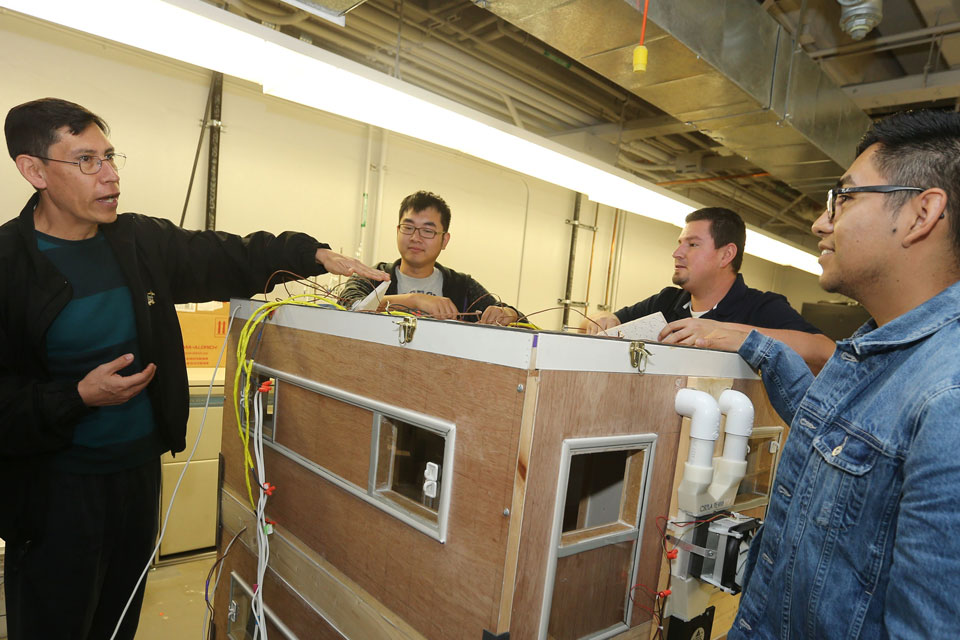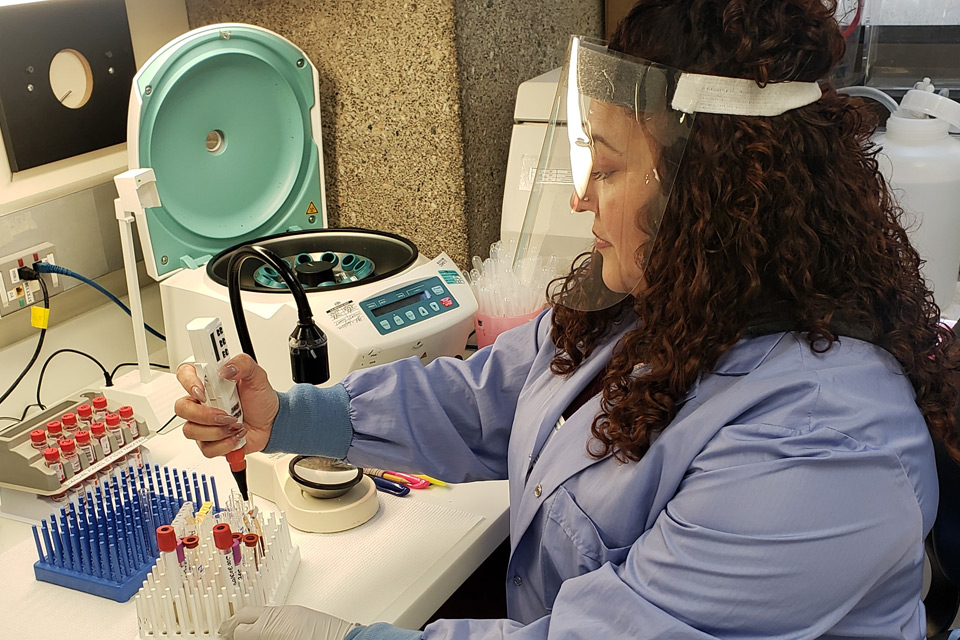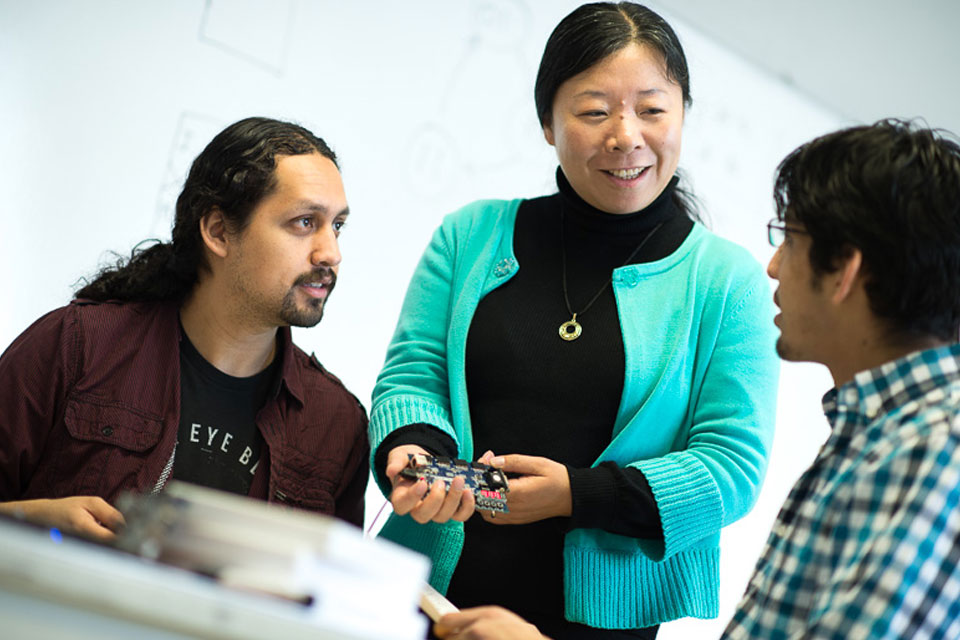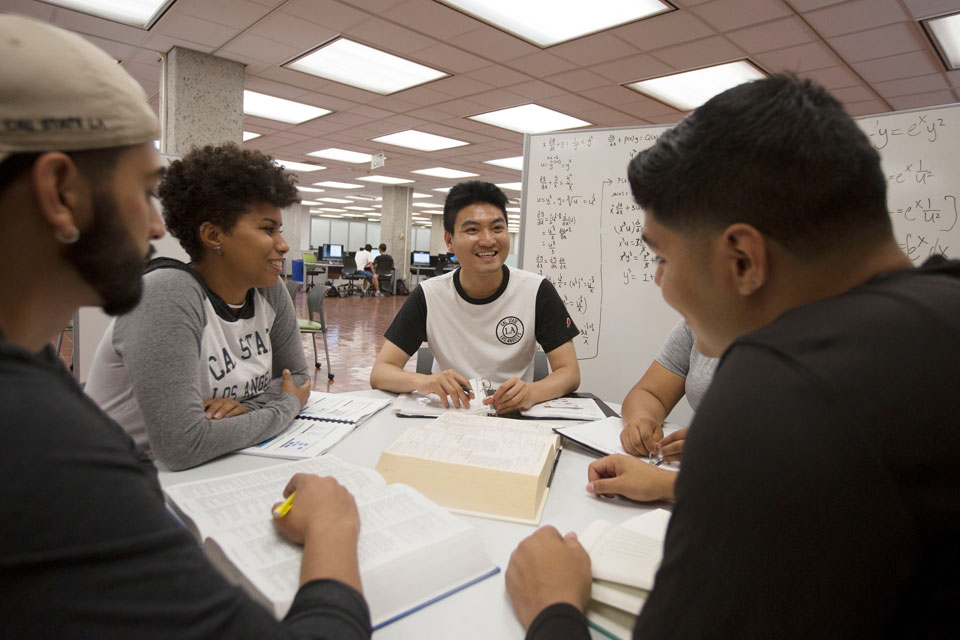This fall, with students and faculty gathering in virtual classrooms, Cal State LA Professor Socorro Orozco has built her plans around YouTube and other video resources as she prepares to instruct pre-service schoolteachers working to earn their credentials.
Orozco is also taking advantage of advanced features available in the Canvas learning management system and a promising collaboration platform called Padlet, which enables faculty and students to share multimedia content and converse with each other in virtual environments.
“We are not just going to react and try to do things the way we used to do them before and fit them into a place where they don’t work,” says Orozco, an assistant professor of K-12 mathematics education in the Charter College of Education (CCOE). “We’re going to respond as creatively as possible.”
We caught up with Orozco to discuss how she is preparing for the fall, as part of an ongoing series on faculty members working to develop innovative and engaging virtual instruction.
What courses are you teaching in the fall?
Orozco is teaching courses in elementary math teaching and secondary instructional and management strategies, as well as a directed teaching section, training pre-credentialed teachers in field assignments in area schools.
What lessons did you learn from remote instruction in the spring?
Orozco is both a product of CCOE—where she earned her multiple-subject teaching credential and B.A., M.A. and Ed.D.—and a leader there in advancing remote instruction practices. She helped design CCOE’s first courses to be taught fully online, including Curriculum and Teaching of Elementary Mathematics, which she taught in the spring and will teach again in the fall.
She had created her online instruction modules by applying lessons from the semester-long Designing Online Courses workshop offered by Cal State LA’s Center for Effective Teaching and Learning. With that grounding, Orozco was fully prepared for the university’s switch to fully virtual mode in March.
“That was actually one of the benefits for those of us who are early adopters,” she says. “I felt that I had the responsibility to take advantage of all the resources.”
Maintaining connections was crucial, both before and after the transition to remote teaching and learning, Orozco says. Building on positive student feedback, she will continue to use YouTube as an essential teaching medium. In addition, she plans a hybrid of full-class discussions and small-group breakouts using Canvas.
How do you plan to keep your students engaged in the fall?
In her childhood household, Orozco recalls, “math was as visible as tortillas.” Her father was a schoolteacher in Mexico and a formative influence in her learning, instilling in her an appreciation of working with students. Thus, for her, the question about fall semester is broader: How can the remote learning experience be fruitful for the pre-service teachers she is instructing, for the established classroom teachers who are mentoring them and, most important, for the pupils and their families now interacting from their homes with educational professionals?
Orozco has joined with fellow CCOE professors Christina Restrepo Nazar, who teaches science methods, and Jamie Marsh, who teaches reading and writing methods, to reimagine assignments in the field for pre-service teachers. They are part of a Cal State LA project called Literacy+STEM that seeks to build community and inclusion in academic spaces.
“We went full speed on designing fieldwork assignments that would keep the family relationship-centered,” Orozco says. “Teachers are not just going to be interacting with the students. They’re really going to be interacting with the families.”
She remains hopeful that the latest in instructional technology tools can provide solutions—that “we are in a place where we have more resources than we could imagine at our disposal to make an assignment like this work.”
What new features or approaches are you incorporating into your virtual courses?
Orozco is especially enthusiastic about Padlet, a highly visual online collaboration tool that resembles a bulletin board. Working in spaces called “walls,” “shelves,” “canvases” and the like, multiple users can share videos, notes, drawings and other materials, post comments, engage in chats and otherwise interact.
In the case of a directed teaching class, Orozco says, she might use Padlet to post a video tutorial to instruct her pre-service teachers in how to teach a specific arithmetic task. They could, from there, develop and post brief video lessons for their pupils. The pupils could post their questions and answers in the Padlet workspace.
With children being schooled at home, their parents could also use Padlet to get involved. And the pre-service teachers themselves could share expertise, ask questions and stay in touch with their classmates through use of a community map, even as they work apart.
For Orozco, the promise of tools like Padlet is not just about the technology or functionality. It’s the social presence that they allow in our suddenly changed world.
What are you most looking forward to in the fall?
“For us working in directed teaching, it’s going to be a big test,” Orozco says of the coming semester. “This has given us an opportunity to think about teachers and how to prepare them in a different way.”
The changing relationships and approaches made necessary by the pandemic won’t necessarily be going away, she says. The profession will have to think more deeply about how best to serve poor and working-class families, for example.
“I’m a very hopeful person,” Orozco says. “This is an opportunity to see the world of schooling differently.”
RELATED:
# # #
California State University, Los Angeles is the premier comprehensive public university in the heart of Los Angeles. Cal State LA is ranked number one in the United States for the upward mobility of its students. Cal State LA is dedicated to engagement, service, and the public good, offering nationally recognized programs in science, the arts, business, criminal justice, engineering, nursing, education, and the humanities. Founded in 1947, the University serves more than 26,000 students and has more than 250,000 distinguished alumni.
Cal State LA is home to the critically-acclaimed Luckman Fine Arts Complex, Pat Brown Institute for Public Affairs, Hertzberg-Davis Forensic Science Center, Hydrogen Research and Fueling Facility, Billie Jean King Sports Complex and the TV, Film and Media Center. For more information, visit www.CalStateLA.edu.





